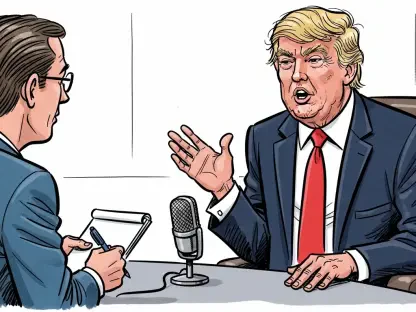In a dynamic landscape where states are navigating the complexities of artificial intelligence, Donald Gainsborough’s insights are invaluable. Leading Government Curated, he offers deep expertise in policy and legislation. Today, he discusses various state approaches to AI regulation, elucidating the diverse and evolving strategies.
Can you explain the main findings of the audit conducted by New York Comptroller Thomas DiNapoli on the state agencies’ use of AI?
The audit by Comptroller DiNapoli highlighted several significant areas of concern. He found that the state’s centralized guidelines on AI were inadequate. The specific agencies audited included the Office for the Aging, the Department of Corrections and Community Supervision, the Department of Motor Vehicles, and the Department of Transportation. Key concerns were the lack of detailed guidance and the absence of an inventory of AI tools used by these agencies.
What specific risks did Comptroller DiNapoli identify in his audit related to the use of AI in New York state agencies?
DiNapoli identified multiple risks, notably the irresponsible use of AI due to insufficient guidelines. He described the current AI guidelines as fragmented and stressed that the lack of an inventory of AI tools leaves the state vulnerable as it cannot ensure these technologies are used appropriately or securely.
How does the AI governance in New York State compare to other states?
New York’s approach to AI governance is quite rigorous compared to other states. For instance, Montana has taken a more hands-off approach with its “Right to Compute Act,” which focuses on preserving digital freedoms without heavy government intervention. Virginia, too, has resisted stringent regulations, favoring economic growth over strict oversight.
What is the “Acceptable Use of Artificial Intelligence Technologies Policy” issued by New York’s Office of Information Technology Services?
This policy aims to guide state agencies on the responsible use of AI technologies. However, according to the audit, its effectiveness has been questioned due to a significant disconnect between the centralized policy and the individual agencies’ understanding and implementation of AI. The lack of detailed guidance has left agencies to interpret and manage AI use independently.
What steps has New York taken to ensure agencies know how to use AI responsibly?
New York has urged agencies to rely on federal guidelines for additional information and has mandated that agencies conduct their own risk assessments and compliance checks. However, the decentralized approach and lack of a robust oversight mechanism have been flagged as major issues by Comptroller DiNapoli.
How did Montana approach AI regulation with its “Right to Compute Act”?
Montana’s “Right to Compute Act” is designed to affirm residents’ rights to use computing technology, including AI and cloud services, without undue government interference. A key component of this legislation is the requirement for any AI regulation to have a compelling government interest, safeguarding public health and safety while preserving digital freedoms.
What are the views of different stakeholders on Montana’s new AI law?
For example, Tanner Avery from the Frontier Institute expressed strong support, stating that Montana’s law is a critical step in treating digital rights with utmost scrutiny. This sentiment was echoed by various advocacy groups who favor minimal government intervention in the use of AI.
How does the approach to AI regulation in Virginia differ from New York and Montana?
Virginia’s approach stands in stark contrast as illustrated by Governor Youngkin’s veto of a bill aimed at regulating high-risk AI systems. He emphasized that stringent regulations could hinder economic growth and innovation, advocating for executive actions over legislative measures in managing AI.
What happened with the AI regulation bill in California?
In California, Governor Gavin Newsom vetoed a bill that would have required AI developers to test their systems in extreme scenarios. The proposed legislation aimed to ensure AI systems could handle various situations safely but faced resistance, reflecting the state’s cautious approach to heavy-handed regulation.
Why is there an uneven approach to AI regulation among various states?
The disparity in AI regulation across states stems from differing priorities; some states prioritize innovation and economic growth, while others emphasize public safety and ethical considerations. This uneven approach can impact businesses by creating a patchwork of compliance requirements, potentially stifling innovation and complicating operations. Proposed solutions include federal guidelines to unify AI regulation standards.
What role do some groups and elected officials believe the federal government should play in regulating AI?
Groups like the NewDEAL Forum’s AI Task Force advocate for federal involvement to harmonize regulations across states, ensuring consistency and avoiding regulatory fragmentation. Albany’s Chief City Auditor, Dorcey Applyrs, also highlighted the need for a unified approach, warning against varied local and federal policies that could create confusion and inefficiency.
Do you have any advice for our readers?
My advice for readers is to stay informed and engaged with ongoing AI policy developments. As states navigate this complex landscape, understanding the implications of different regulatory approaches can help you better navigate and leverage these technologies responsibly.









